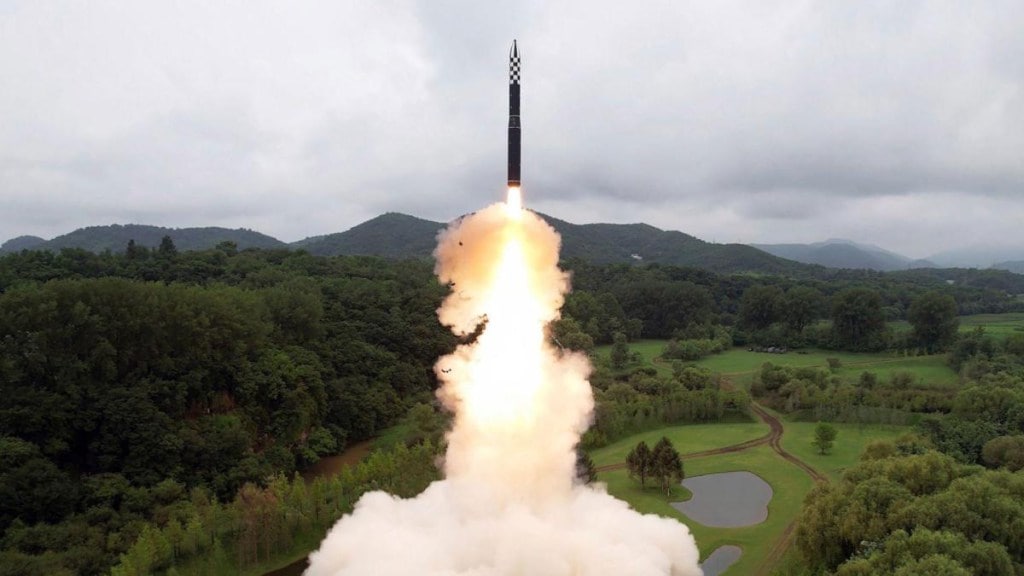North Korea successfully conducted the second launch of its Hwasong-18 intercontinental ballistic missile (ICBM) on Wednesday. The missile employs solid-fuel technology, providing it with the significant advantage of launching with minimal preparation. Let’s delve into the characteristics of solid-fuel technology and its potential to enhance North Korea’s missile systems.
What is solid-fuel technology?
- Solid-fuel technology involves a mixture of fuel and oxidizer to create propellants. Typically, metallic powders like aluminium serve as the fuel, while ammonium perchlorate, a salt derived from perchloric acid and ammonia, acts as the oxidizer
- These components are combined, bound together by a robust rubbery material, and then packed into a metal casing
- Upon ignition, the solid propellant undergoes combustion, causing the oxygen from the ammonium perchlorate to combine with aluminium
- This reaction generates an immense amount of energy and temperatures exceeding 5,000 degrees Fahrenheit (2,760 degrees Celsius). The resulting thrust lifts the missile off the launch pad, facilitating its trajectory
Which countries have this technology?
The origins of solid-fuel technology can be traced back to ancient Chinese fireworks, but it experienced significant advancements during the mid-20th century when the United States developed more potent propellants. North Korea has incorporated solid fuel into a range of smaller, shorter-range ballistic missiles.
The Soviet Union introduced its first solid-fuel ICBM, the RT-2, in the early 1970s, followed by France’s development of the S3 (SSBS), a medium-range ballistic missile. China began testing solid-fuel ICBMs in the late 1990s. South Korea has also claimed to possess “efficient and advanced” solid-propellant ballistic missile technology, albeit primarily in smaller rockets thus far.
Solid vs Liquid propellants
In comparison to liquid propellants, solid fuel offers less propulsive thrust and power. However, it compensates for this by requiring less complex technology and additional weight. Solid propellants burn rapidly and densely, generating thrust over a shorter duration. Unlike liquid fuel, solid fuel can be stored for extended periods without degradation or breakdown, a common issue with liquid propellants.
Experts highlight that solid-fuel missiles are easier and safer to operate, requiring less logistical support. Moreover, their utilisation makes them harder to detect and increases their survivability when compared to liquid-fuel weapons.
North Korea has expressed that the development of its new solid-fuel ICBM, the Hwasong-18, will “radically promote” its nuclear counterattack capability. After the first launch, South Korea’s defence ministry sought to downplay the testing, stating that North Korea would require “extra time and effort” to master the technology. As of Thursday, a ministry spokesperson confirmed that they were still analysing the latest launch.
